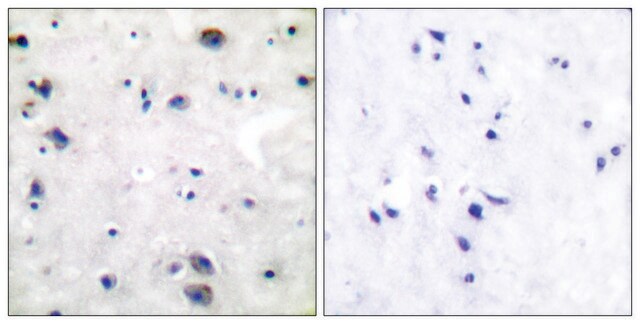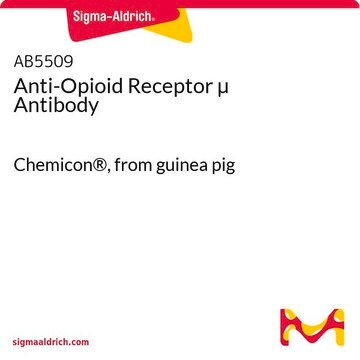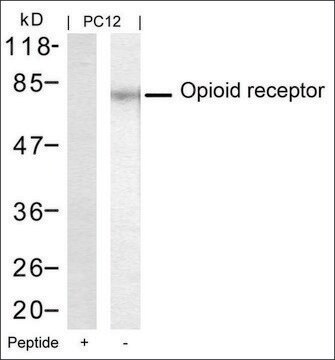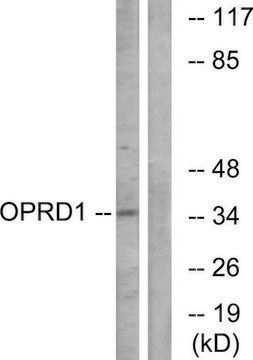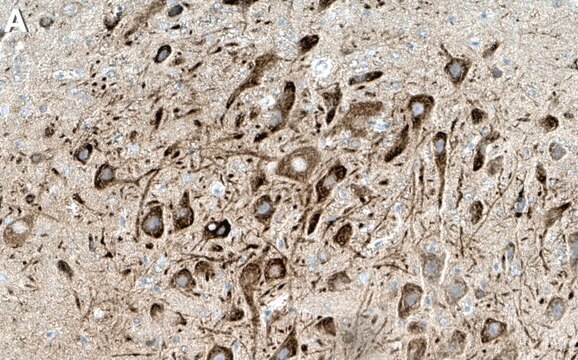AB5511
Anti-Opioid Receptor Antibody, µ, pain
serum, Chemicon®
Sinônimo(s):
mu opiate receptor, opioid receptor, mu 1
About This Item
Produtos recomendados
fonte biológica
rabbit
Nível de qualidade
forma do anticorpo
serum
tipo de produto de anticorpo
primary antibodies
clone
polyclonal
reatividade de espécies
mouse, primate, rat, human
fabricante/nome comercial
Chemicon®
técnica(s)
immunocytochemistry: suitable
immunohistochemistry: suitable
western blot: suitable
nº de adesão NCBI
nº de adesão UniProt
Condições de expedição
dry ice
modificação pós-traducional do alvo
unmodified
Informações sobre genes
human ... OPRM1(4988)
Descrição geral
Especificidade
Imunogênio
Aplicação
1:2,500-1:5,000 dilution of a previous lot was used.
Western blot:
1:1,000 dilution of a previous lot was used.
Immunocytochemistry:
1:2,500-1:5,000 dilution of a previous lot was used.
Optimal working dilutions must be determined by the end user.
Neuroscience
Neuroinflammation & Pain
Qualidade
Western Blot Analysis:
1:500 dilution of this antibody detected Opioid Receptor on 10 µg of Human Liver lysate.
Descrição-alvo
forma física
Armazenamento e estabilidade
Nota de análise
Spinal cord, liver lysate
Outras notas
Informações legais
Exoneração de responsabilidade
Não está encontrando o produto certo?
Experimente o nosso Ferramenta de seleção de produtos.
Código de classe de armazenamento
10 - Combustible liquids
Classe de risco de água (WGK)
WGK 1
Certificados de análise (COA)
Busque Certificados de análise (COA) digitando o Número do Lote do produto. Os números de lote e remessa podem ser encontrados no rótulo de um produto após a palavra “Lot” ou “Batch”.
Já possui este produto?
Encontre a documentação dos produtos que você adquiriu recentemente na biblioteca de documentos.
Nossa equipe de cientistas tem experiência em todas as áreas de pesquisa, incluindo Life Sciences, ciência de materiais, síntese química, cromatografia, química analítica e muitas outras.
Entre em contato com a assistência técnica
